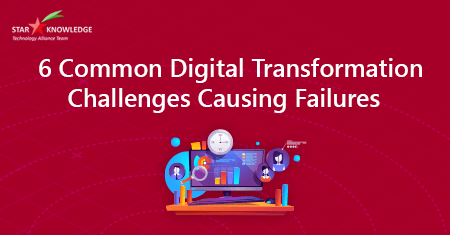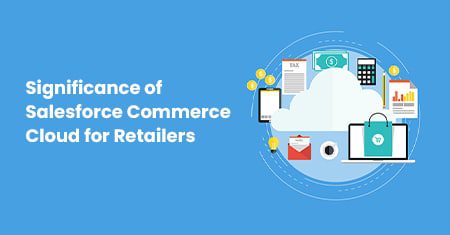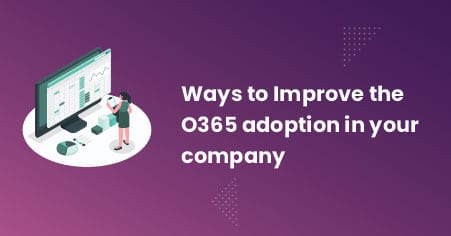

Enterprises today are moving towards achieving a path of better growth and deliver enhanced user experience to their customers while at the same time managing their applications and maintaining their security. On average, there are more than 7 applications used by enterprises to manage their customers’ user experiences and life cycle with this number growing rapidly every day.
Since most of the businesses have adopted cloud solutions, they are sure to embrace technology updates, especially on security features to achieve a secured cloud platform and one that technology is digital access management solution. Digital IAM helps businesses in managing access to their data and documents through several steps of authentications ensuring secured digital space.
Initiatives by top minds
In the majority of the situations, it is the CIO who is the taskmaster and the key visionary for the organization’s digital transformation. In one of the studies conducted by IDG commissioned by Okta, the top-level executives of leading businesses identified key issues and challenges pertaining to their digital transformation and implementation of Identity and Access Management (IAM) for the cloud.
A majority of the respondents said introducing new user experiences was extremely critical for their success. However, only about 25% of these respondents acknowledged that they had implemented these new experiences. The depth of the situation is only realized when nearly 75% of the respondents claimed that they had migrated their businesses to the cloud. What this means is that there is a clear gap with businesses indicating the complexities and risks especially when today’s digital world operations are run based on user roles.
Leaning towards a digital business
A very important factor affecting the transformation of an organization to the cloud is CIO who invests his time in the business initiatives. The level of influence puts the CIO in a position to identify which initiatives are best suited to have positive effects on enterprise digital initiatives and to make decisions regarding the best technologies to use in their pursuit. Clearly, one-third of the organizations that have made their journey towards the cloud have shown this influence by offering their customers an unmatchable experience of easy application access.
What is Digital Identity and Access Management?
Identity and access management is the security discipline of managing digital identities on-premise or cloud. A digital IAM solution defines and manages the roles of individuals and governs their access privileges to an organization’s resources. These individuals might be your customers, employees, stakeholders, etc. The whole objective IAM systems achieve is “one identity per individual”. The IAM technology ensures that given identities have access to the right resources (applications, networks, databases, etc.) within the right context.
Identity and Access Management with IDaaS Solutions
The first step to digital transformation starts with Identity. In a connected world where mobile, web, and smart devices rule, how do you prioritize your digital initiatives?
Digital identity management has become the number one priority for organizations that are looking to decrease the amount of time they spend deploying and managing their cybersecurity systems. Cloud-based systems are the key pillars for today’s digital organizations to house their proprietary data and critical business knowledge. This means, providing a smooth and rich user experience is not just the top priority. The CIO needs to revisit the entire process of accessing the data in the cloud and address the huge challenge of the security needs of the organization. User access to this diverse set of applications and their data via an array of devices and channels needs to be centrally managed for both efficiency and security. This brings us to the point where we start to think about cloud identity management solutions.
From a recent study by IDG, clearly, the results state that 57%of the businesses have implemented the Single Sign-On solutions to their products and employee portals, and a large portion of the remaining businesses indicating their plan to deploy the same. This level of IDaaS adoption indicates a high rate of focus by the business entities to enhance their customer and employee experiences. However, only a small chunk of the businesses indicates their acceptance of IAM cloud computing, Enterprise Mobility Solutions, and Multi-Factor Authentication deployments.
Hurdles along the way of digital transformation
IAM is a huge priority for companies as they initiate their digital businesses or cloud transformation. From the study, most of the respondents indicate concerns with respect to Security, Legacy Infrastructure, High Availability issues. These sets of challenges are followed by concerns about the unpredictable and complex user environments and deployments. These challenges will have to be strongly addressed by the IAM providers if the businesses are to move their digital initiatives further.
Answers to your Identity and Access Management concerns
It is sufficiently clear that IDaaS is the key driver for digital business initiatives ranging from employee enablement, new customer experiences, secure access to sensitive data, application migration to the cloud infrastructures, and user role management. To stay competitive, old businesses will have to rekindle their fire and make the paradigm shift to the cloud while making sure availability, accessibility, and security.
IAM is the solution to all the above digital needs. However, the implementation of IDaaS and maintaining technology requires deep knowledge and expertise. Choosing a reliable enterprise partner becomes the need of the hour. Once the tasks associated with managing IAM are entrusted to their IDaaS provider, enterprises can devote valuable resources to those top priorities.
Next Steps
Successful implementation requires an expert partner who understands the business needs to help your transition to the digital world a smooth one. If you have not yet started the transformation to IAM cloud, it should become your #1 priority to explore new secure ways to keep your Identity and Access Management goals in check to achieve the business objectives with Okta’s IDaaS managing your various applications or Azure’s Active Directory to keep your internal productivity tools in check.
About the author
Arun Kumar is a Cloud Migrations Expert at Star Knowledge, a leading global service provider in the area of digital transformation and cloud migrations for its customers. With nearly 2 decades of architecting solutions and roadmap strategies for enterprises to go digital and stay competitive, Arun is a certified Transvault Migrations Engineer, Okta certified professional and a Microsoft Certified Professional deploying Office 365, Autotask PSA solutions, and other productivity solutions.
Our Related Posts
Adoption of Cloud by Hotel Industry
17 JAN 2019Investment in technology must bring value to business whether it’s a large international hotel chain or a small….
Is Managed Services Right for you?
Dealing with a whole IT infrastructure can be prohibitively costly, which is the reason many organizations are beginning to outsource….
Migrate to Azure With Confidence: Modernize Your Infrastructure Today
Do have any thoughts, like how to move your business-critical services securely and dependably to the cloud? If no use our recommendations….





Sorry, the comment form is closed at this time.